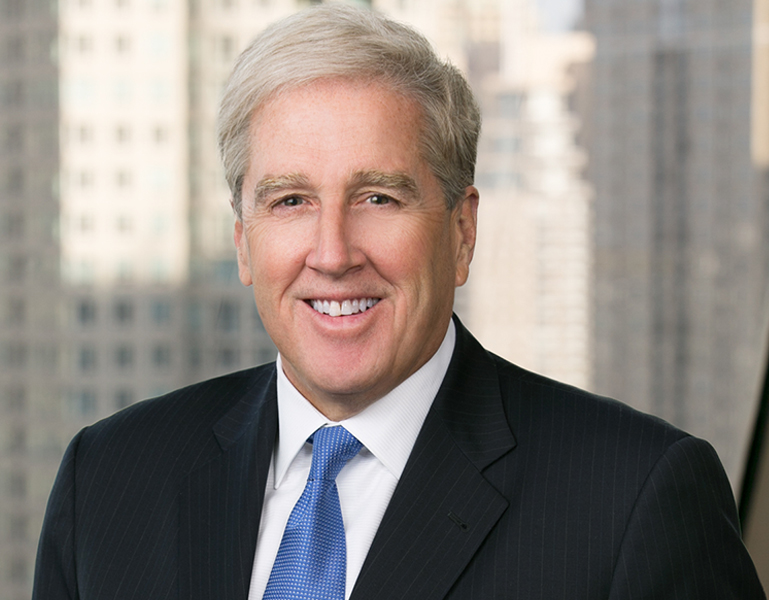Update: Regulatory Relief Passed by Congress
On May 22, 2018, the House of Representatives passed the bipartisan Economic Growth, Regulatory Relief and Consumer Protection Act (S. 2155) (the “Consumer Protection Act”), which had been previously passed by the Senate. The Consumer Protection Act will now be sent to President Trump who is expected to sign it into law in the coming weeks.
The Consumer Protection Act becomes the first legislatively enacted regulatory relief bill since the recession, and rolls back various Dodd-Frank Act provisions. Below we provide a brief summary of some of the Consumer Protection Act’s major provisions.
Capital Simplification for Qualifying Community Banks. The federal banking agencies would be directed to initiate the rulemaking process to develop a “Community Bank Leverage Ratio” of not less than 8 percent and not more than 10 percent for community banks and their holding companies with total consolidated assets of $10 billion or less. Any qualifying community bank or holding company that exceeds the Community Bank Leverage Ratio will be considered well-capitalized. Qualifying banks that meet this ratio would not even have to calculate the various other capital ratios currently employed by the federal banking regulators (e.g., Total Risk-Based Capital Ratio, Common Equity Tier-1 Capital Ratio, or Tier-1 Risk-Based Capital Ratio).
Small Bank Holding Company Policy Statement. The Consumer Protection Act would adjust the Federal Reserve’s Small Bank Holding Company Policy Statement (the “Policy Statement”) to cover banks with up to $3 billion in consolidated assets, up from the current threshold of $1 billion.
High Volatility Commercial Real Estate (“HVCRE”) Loans. The Federal Deposit Insurance Act would be amended to restrict the ability of federal banking agencies to designate a heightened risk weighting for certain HVCRE loans. Specifically, the federal banking agencies would only be permitted to assign a heightened risk weighting to a HVCRE loan if the loan in question (i) primarily finances, has financed, or refinances the acquisition, development, or construction of real estate; (ii) has the purpose of providing financing to acquire, develop, or improve such real estate into income-producing real estate; and (iii) is dependent upon future income or sales proceeds from, or refinancing of, such real estate for the repayment of such credit facility.
Volcker Rule—Community Banks. In general, the Volcker Rule prohibits a banking institution from (i) engaging in proprietary trading or (ii) acquiring or retaining any equity, partnership, or other ownership interest in a hedge fund or a private equity fund. Pursuant to the Consumer Protection Act, the Volcker Rule would be amended to exempt from its restrictions community banks with total consolidated assets of less than $10 billion and which have trading assets and liabilities constituting less than 5 percent of total consolidated assets.
Home Mortgage Disclosure Act (“HMDA”). HMDA would be amended to provide exemptions from certain of HMDA’s enhanced disclosure requirements for financial institutions that originate fewer than (i) 500 closed-end mortgage loans or (ii) 500 open-end lines of credit in each of the two preceding calendar years. However, this exemption will not otherwise be available for financial institutions that have received a rating of “needs to improve” during each of its two most recent examinations, or a rating of “substantial noncompliance” on its most recent examination, under the Community Reinvestment Act.
Short Form Call Reports. The applicable federal banking agencies would be directed to issue regulations that would provide reduced and short form reporting for insured depository institutions with less than $5 billion in total consolidated assets and which meet certain other criteria as determined by the federal banking agencies.
Eighteen-Month Regulatory Examination Cycle. The Consumer Protection Act would raise the consolidated asset threshold from $1 billion to $3 billion for an institution to qualify for an 18-month examination cycle.
Federal Savings Association Charter Flexibility. Federal savings associations with less than $30 billion in total assets could elect to operate as a “Covered Savings Association.” Covered Savings Associations would have the same rights and privileges as national banks.
Enhanced Prudential Standards. The $50 billion asset threshold for enhanced prudential standards is to be increased to $250 billion. In addition, bank holding companies with total assets between $50 billion and $100 billion would be exempt from enhanced prudential standards immediately upon the Consumer Protection Act’s enactment. Bank holding companies with total assets greater than $100 billion but less than $250 billion would be exempt from enhanced prudential standards 18 months after enactment. The Federal Reserve would have the authority to exempt bank holding companies with assets between $100 billion and $250 billion prior to the end of the 18-month period.
Treatment of Certain Municipal Obligations. For purposes of the Liquidity Coverage Ratio regulations, municipal obligations of a state, agency, political subdivision or instrumentality of a state will be treated as a “high-quality” liquid asset, provided that on the date of calculation, such obligation was (a) liquid and readily marketable and (b) of investment grade.
To view the full text of the Consumer Protection Act, click here.
If you have any questions regarding the Consumer Protection Act, please contact James M. Kane at +1 (312) 609 7533, Daniel C. McKay, II at +1 (312) 609 7762, James W. Morrissey at +1 (312) 609 7717, Jennifer Durham King at +1 (312) 609 7835, Juan M. Arciniegas at +1 (312) 609 7655, Lisa M. Simonetti at +1 (424) 204 7738, Mark C. Svalina at +1 (312) 609 7741 or your Vedder Price attorney.
Vedder Thinking | Articles Update: Regulatory Relief Passed by Congress
Newsletter
May 23, 2018
On May 22, 2018, the House of Representatives passed the bipartisan Economic Growth, Regulatory Relief and Consumer Protection Act (S. 2155) (the “Consumer Protection Act”), which had been previously passed by the Senate. The Consumer Protection Act will now be sent to President Trump who is expected to sign it into law in the coming weeks.
The Consumer Protection Act becomes the first legislatively enacted regulatory relief bill since the recession, and rolls back various Dodd-Frank Act provisions. Below we provide a brief summary of some of the Consumer Protection Act’s major provisions.
Capital Simplification for Qualifying Community Banks. The federal banking agencies would be directed to initiate the rulemaking process to develop a “Community Bank Leverage Ratio” of not less than 8 percent and not more than 10 percent for community banks and their holding companies with total consolidated assets of $10 billion or less. Any qualifying community bank or holding company that exceeds the Community Bank Leverage Ratio will be considered well-capitalized. Qualifying banks that meet this ratio would not even have to calculate the various other capital ratios currently employed by the federal banking regulators (e.g., Total Risk-Based Capital Ratio, Common Equity Tier-1 Capital Ratio, or Tier-1 Risk-Based Capital Ratio).
Small Bank Holding Company Policy Statement. The Consumer Protection Act would adjust the Federal Reserve’s Small Bank Holding Company Policy Statement (the “Policy Statement”) to cover banks with up to $3 billion in consolidated assets, up from the current threshold of $1 billion.
High Volatility Commercial Real Estate (“HVCRE”) Loans. The Federal Deposit Insurance Act would be amended to restrict the ability of federal banking agencies to designate a heightened risk weighting for certain HVCRE loans. Specifically, the federal banking agencies would only be permitted to assign a heightened risk weighting to a HVCRE loan if the loan in question (i) primarily finances, has financed, or refinances the acquisition, development, or construction of real estate; (ii) has the purpose of providing financing to acquire, develop, or improve such real estate into income-producing real estate; and (iii) is dependent upon future income or sales proceeds from, or refinancing of, such real estate for the repayment of such credit facility.
Volcker Rule—Community Banks. In general, the Volcker Rule prohibits a banking institution from (i) engaging in proprietary trading or (ii) acquiring or retaining any equity, partnership, or other ownership interest in a hedge fund or a private equity fund. Pursuant to the Consumer Protection Act, the Volcker Rule would be amended to exempt from its restrictions community banks with total consolidated assets of less than $10 billion and which have trading assets and liabilities constituting less than 5 percent of total consolidated assets.
Home Mortgage Disclosure Act (“HMDA”). HMDA would be amended to provide exemptions from certain of HMDA’s enhanced disclosure requirements for financial institutions that originate fewer than (i) 500 closed-end mortgage loans or (ii) 500 open-end lines of credit in each of the two preceding calendar years. However, this exemption will not otherwise be available for financial institutions that have received a rating of “needs to improve” during each of its two most recent examinations, or a rating of “substantial noncompliance” on its most recent examination, under the Community Reinvestment Act.
Short Form Call Reports. The applicable federal banking agencies would be directed to issue regulations that would provide reduced and short form reporting for insured depository institutions with less than $5 billion in total consolidated assets and which meet certain other criteria as determined by the federal banking agencies.
Eighteen-Month Regulatory Examination Cycle. The Consumer Protection Act would raise the consolidated asset threshold from $1 billion to $3 billion for an institution to qualify for an 18-month examination cycle.
Federal Savings Association Charter Flexibility. Federal savings associations with less than $30 billion in total assets could elect to operate as a “Covered Savings Association.” Covered Savings Associations would have the same rights and privileges as national banks.
Enhanced Prudential Standards. The $50 billion asset threshold for enhanced prudential standards is to be increased to $250 billion. In addition, bank holding companies with total assets between $50 billion and $100 billion would be exempt from enhanced prudential standards immediately upon the Consumer Protection Act’s enactment. Bank holding companies with total assets greater than $100 billion but less than $250 billion would be exempt from enhanced prudential standards 18 months after enactment. The Federal Reserve would have the authority to exempt bank holding companies with assets between $100 billion and $250 billion prior to the end of the 18-month period.
Treatment of Certain Municipal Obligations. For purposes of the Liquidity Coverage Ratio regulations, municipal obligations of a state, agency, political subdivision or instrumentality of a state will be treated as a “high-quality” liquid asset, provided that on the date of calculation, such obligation was (a) liquid and readily marketable and (b) of investment grade.
To view the full text of the Consumer Protection Act, click here.
If you have any questions regarding the Consumer Protection Act, please contact James M. Kane at +1 (312) 609 7533, Daniel C. McKay, II at +1 (312) 609 7762, James W. Morrissey at +1 (312) 609 7717, Jennifer Durham King at +1 (312) 609 7835, Juan M. Arciniegas at +1 (312) 609 7655, Lisa M. Simonetti at +1 (424) 204 7738, Mark C. Svalina at +1 (312) 609 7741 or your Vedder Price attorney.



